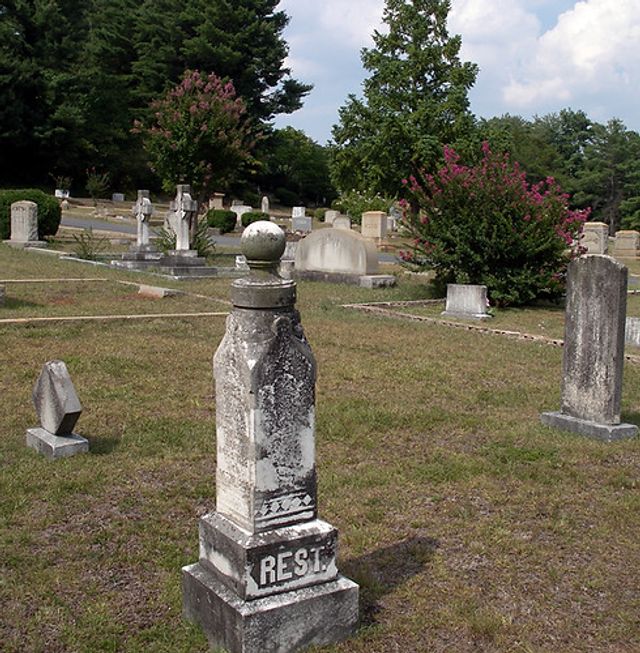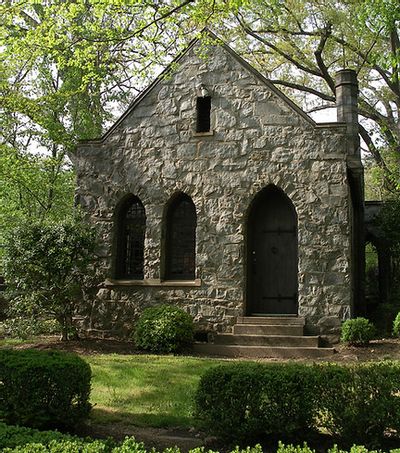The Town of Rutherfordton was formed in 1787 to serve as the seat of government for Rutherford County. Both the County and the Town are the namesakes of General Griffith Rutherford, a popular western North Carolina politician and general during the Revolutionary War period.
Rutherfordton replaced the small village of Gilbert Town (once located 3 miles north) which served first as the county seat of old Tryon County during the Colonial period and continued to serve in that capacity when Rutherford County was formed in 1779. Because the move from Gilbert Town to Rutherfordton caused no interruption in the official business of the county or the local court, Rutherfordton holds the distinction of being home to the oldest continuing body of government in western North Carolina.

During the American Revolution, the corps of Patriots known as the OverMountain Men marched through present-day Rutherfordton on their way to the Battle of Kings Mountain. The Patriots defeated British troops under the command of Maj. Patrick Ferguson on October 7, 1780.
During the Civil War, Rutherfordton was ransacked by Union soldiers. In the final days of the conflict, in April 1865, U.S. General George Stoneman sent troops into Rutherfordton to quell rebel uprising and pro-Confederate sentiment and to gather much-needed supplies for his troops. During the event, known as Stoneman’s Raid, at least three buildings here were destroyed by fire. The office of The Rutherford Enquirer was burned to the ground as was the telegraph office and a livery stable. The post office was ransacked, and several private homes were commandeered for military use.
Following the war, Rutherfordton was occupied for 11 months by federal troops and placed under martial law because of civil unrest.
Cleghorn Creek in Rutherfordton was the location of an iron foundry that manufactured ball-shot ammunition for the Confederate Army. Also, oral tradition says that wagon wheels and frames were manufactured along the creek here for use by the Confederacy. A member of the Congress of the Confederate States of America (CSA), Judge G.W. Logan, is buried in the Rutherfordton City Cemetery. In addition, Confederate Brigadier-General Collette Leventhorpe was an antebellum resident of Rutherfordton and returned to live in the town for a time in the 1870s.

Rutherfordton was the location of the first U.S. Post Office in western North Carolina, established in 1798. The town was home to the first school chartered by the state legislature for western North Carolina, the Rutherfordton Academy, which opened in 1806, and also the site of the first newspaper published in the western portion of the state, The North Carolina Spectator and Western Advertiser, founded in 1831.
In the 1830s and 1840s, Rutherfordton was home to a successful private mint that produced more than $2.25 million dollars in gold coinage. The mint, founded by Christopher Bechtler, Sr. in 1831, is credited with producing the nation’s first $1 gold coin. The Bechtler family also manufactured fine jewelry, watches, clocks, and candlesticks. The family is equally noted as gunsmiths, for their production of long guns and pistols.
Rutherfordton is home to the only remaining cluster of antebellum houses and public structures in the southern foothills of North Carolina. St. John’s Church, located on North Main Street was completed in 1849 and consecrated in 1851. It is considered to be the finest example of ecclesiastical Greek-Revival architecture in western North Carolina. Also on Main Street is the stately Greek-Revival mansion known as “Holly Hill,” constructed about 1832 for the James Miller Family. A home built for the Bechtler family in the 1830s survives on Sixth Street, and the Gothic-Revival Rucker-Eaves home (1858-1870), is located nearby on North Washington Street. Other antebellum structures include a home built by Harvey D. Carrier in 1835 which survives on North Main Street, and a private residence, historically known as the Bynum House, on the southwest corner of Sixth and North Washington Streets.
The Rutherford County Court House and the Norris Public Library, both located on Main Street were designed by Louis H. Asbury (1877-1975). Asbury is noted as one of North Carolina’s most important and prolific architects of the 20th century. He was a master at Classic-Revival style architecture which is evident in his designs for the courthouse. This building, which commands an entire block on the west side of Main Street, is sheathed in Indiana limestone and boasts six towering columns fashioned with Corinthian columns featuring acanthus and lotus leaf motifs. An impressive granite monument commemorating the men and women of the Confederacy is located on the courthouse’s front lawn.

St. Francis Episcopal Church, located on North Main Street near the City Cemetery, was completed in 1899. It is an exceptional example of the Gothic-Revival style of architecture. The building was originally constructed for Col. Franklin Coxe and his family but has housed an Episcopal congregation since 1900. The chapel is today adorned with an exceptional collection of religious art glass windows including three windows crafted in the 1920s by the Louis C. Tiffany Company of New York.
In 1995, much of downtown Rutherfordton was listed on the National Register of Historic Places, including more than 45 commercial and public structures. In addition, six other properties in town are listed independently on the National Register, including St. John’s Church (1849), the Carrier Houses (1835, 1879), the Rutherford County Court House (1926), St. Luke’s Chapel at Rutherford Hospital (1907), and the original Rutherfordton-Spindale Central High School building (1925), now R-S Middle School.
In 1931, the Doncaster Collar & Shirt Company was founded in Rutherfordton by S.B. Tanner II and his wife Millie Tanner. That firm was the forerunner of both the Doncaster and Tanner labels that are today recognized as among the oldest and best-known manufacturers of fine women’s fashion in the nation. The company’s headquarters remain in Rutherfordton.
Today, Rutherfordton is home to approximately 4,200 residents. The downtown commercial district is alive with a variety of traditional and specialty shops and businesses that complement the eclectic mix of the town’s citizenry. The downtown historic district and immediate residential neighborhoods encompass more than 150 public, commercial, religious, and residential buildings and homes, most dating from the late 19th or early 20th centuries, that display a wealth of architectural styles and historic periods.